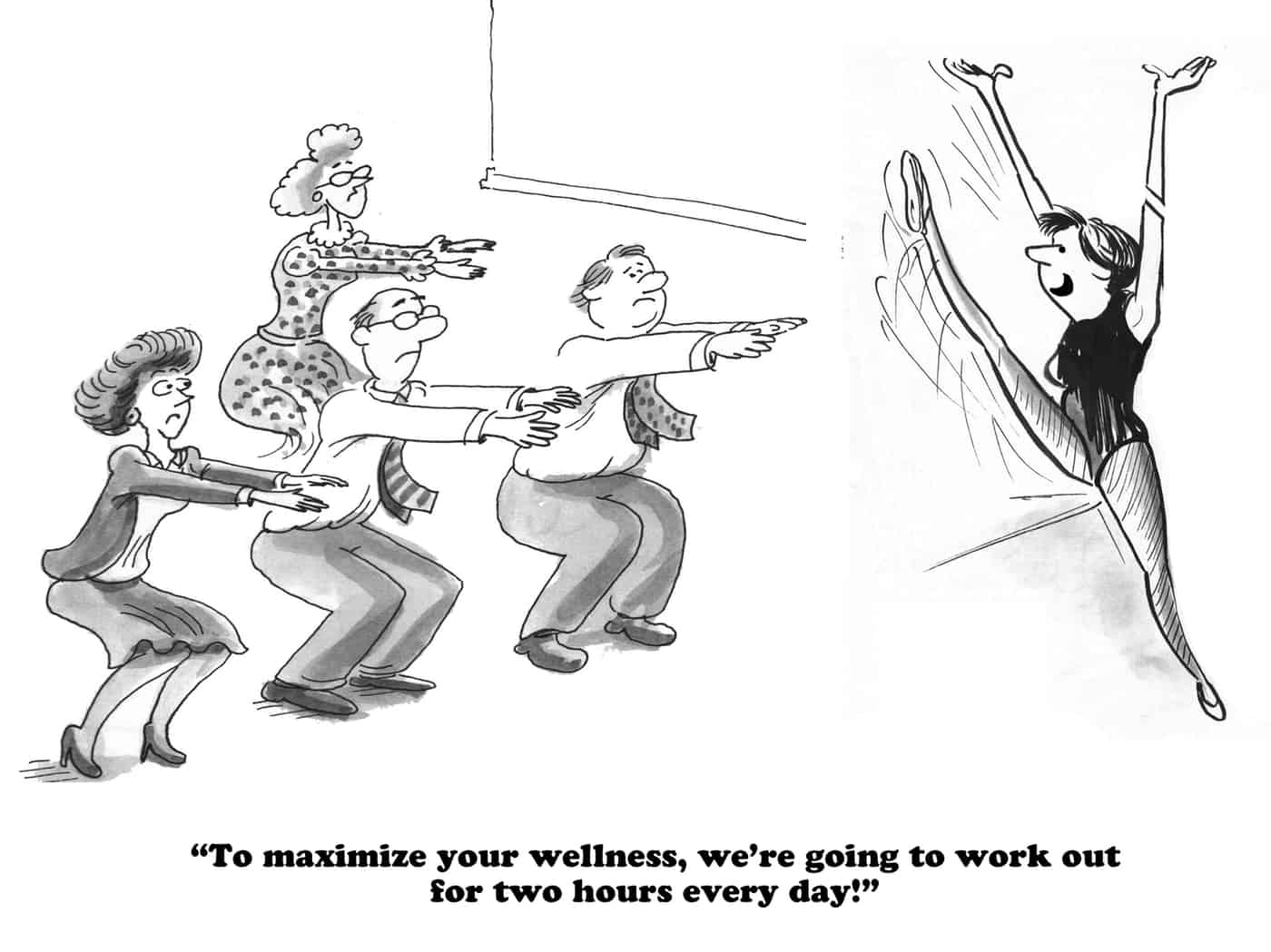Recently Corporate Bodies International circulated an annual membership offer (no costs listed in this link) to its Australian market. It said:
“Employees and their families have access over to over 300 live webinars and exercise classes, monthly health videos, posters, online GP, Dietitian and Exercise Physiologist appointments – from anywhere in the world, just to name a few of the inclusions. All of this for little more than the cost of a cup of coffee.”
It is the last line that requires a bit more consideration as no program only costs just what marketers claim.

The CBI offer included a link to a flyer about its Healthy Bodies Subscription which involves $A1,800 per annum for companies with less than 100 staff to about ten times that for a much larger number of staff. The services extend from webinars, posters for toilet walls and newsletters to “GP2U Online GP Access” which involves:
“Diagnosis, immediate prescriptions, specialist referrals and medical certificates, all from the convenience of the office. Designed for critical workers or the executive team, minimising work disruption”.
For an organisation that has no occupational health and safety (OHS), Human Resources or well-being resources, purchasing a package like this may be financially attractive but it can also lock one into a pool of medical advisors that could generate conflicts later on with, for instance, insurers, legal representatives, project partners and others. The provision of “immediate prescriptions” may also be a benefit that needs some further investigation – prescriptions by who? For any medication?
A company needs to decide whether it wants to be in total control of the medical services it may offer, or may need to offer, to its employees and whether subscriptions are sufficiently responsive to meet the fluctuations that occur with any workforce and with the business’ profitability.
It is also worth considering whether employees can choose to opt-out and continue being diagnosed or treated by their own physician. How would such a corporate subscription allow for this worker right? If the worker opts out, would this be seen as being disloyal? Would this reduce the number of workers covered by the subscription and affect the overall cost to the company?
Owning the welfare program for one’s own employees allows a company to shop for the best deal and to tailor the program to match the fluctuations of the company’s needs. Would this cost more than the subscription fees in the table above? Almost certainly, IF the subscription cost was the only cost involved. It is important to look beyond cost to operating costs like management control, good governance and due diligence – to the broader context to which occupational health and safety law is pushing Australian companies. These factors are rarely costed and are frequently overlooked, probably as a consequence of not being measured. It is a shame that such “intangibles” are accepted as part of economic assessments but are dismissed in relation to OHS.



 On 22 July 2016, the
On 22 July 2016, the